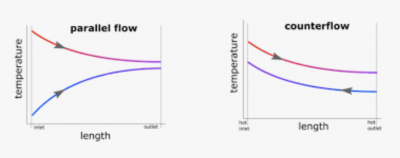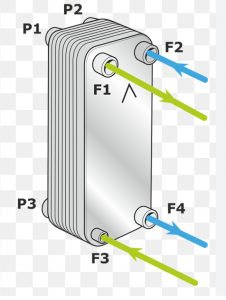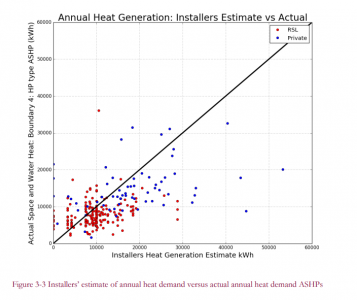Posted by: @dougmlancsMy impression with Octopus after emails with them about getting a survey done (I don’t fit the bill so have looked locally instead) is that they were starting with (relatively) straightforward installs and as they build up their installer base and knowledge base within that group then they’ll broaden their horizons.
I have the same impression. However Octopus isn't the whole industry and one might have hoped that others, perhaps smaller initially, would fill the gaps. Sadly the MCS painting by numbers regime, more or less mandated by government regulation, appears to exclude new entrants who might take the more innovative (and yes more challenging) approach needed for cost effective yet functional and well designed retrofits, or so it appears if my personal experience in the south east of England is typical.
I am on the verge of giving up. I can't get an MCS installer to quote for a system that will work well, without MCS I can't install under permitted development, and my LPA refuses to approve a planning application without imposing unachievable noise constraints that go well beyond those which would apply if I were to install under permitted development. Basically I'm snookered unless I accept a system that, as well as being overpriced, is guaranteed to operate at a low COP because it will be cycling at temperatures of 7C and above. Sad doesn't begin to describe how I feel about this and, to make matters worse, today I read that we are now predicted to breach 1.5C above pre industrial temperatures in 2027.
4kW peak of solar PV since 2011; EV and a 1930s house which has been partially renovated to improve its efficiency. 7kW Vaillant heat pump.
Posted by: @filipeMy installer said he has learned a lesson about flow rate through the plate heat exchanger. We need more data before deciding whether counterflow is needed with this heat exchanger. Basically the secondary delta T may need more time to reduce so the secondary output temperature can rise more (perhaps). The plate length/area is fixed. More plates may help, but it has 36 and 40 is the limit. Pump reversal is only suitable on a short term basis because the zone valves may snap closed with reverse flow.
Phil
I can't think of a single reason why you would want to operate a counterflow heat exchanger the wrong way around, the inefficient parallel way, in a heating or cooling application. When it is the correct counterflow way around, you'd expect the Twater-out to be almost as high as the Tglycol-in, a slight drop between them that could be reduced with a bigger BPHE (brazed plate heat exchanger). In contrast, if you run the flows the same way, then you will just end up with Twater-out approaching Tglycol-out temperature. That means you'll lose an extra DeltaT out of the bphe, likely a 5degC temperature drop giving approximately a 15% reduction in COP.
Pic below of parallel flow (wrong) followed by counterflow (correct):
Pic below of bphe correct use:
@jamespa I have mentioned my experience with Octopus Energy and a survey for an ASHP before in this parish so will not repeat myself other than to say that their staff who carried out the survey ( 2 x 3 man-hours) worked very hard to try and accommodate my peculiar needs but their ‘MCS Guided regime’ just could not fit with my needs. The DHW tank size problem was a ‘biggie’ for me and I think that much more might be made of such techniques as those employed by Sunamp. I chose to be solar energy powered under normal circumstances with the ‘ePV series as I didn’t wish to use the high temperature heat pump route. Space in many houses is at a premium and 210 litres (or larger!) of DHW are not easy to place in the domestic environment - utility rooms are not to be found in most houses! Relaxation of some very stringent requirements and tempering with some common sense might go a long way to ease matters I feel. Regards, Toodles
Toodles, heats his home with cold draughts and cooks food with magnets.
Posted by: @jamespaPosted by: @dougmlancsMy impression with Octopus after emails with them about getting a survey done (I don’t fit the bill so have looked locally instead) is that they were starting with (relatively) straightforward installs and as they build up their installer base and knowledge base within that group then they’ll broaden their horizons.
I have the same impression. However Octopus isn't the whole industry and one might have hoped that others, perhaps smaller initially, would fill the gaps. Sadly the MCS painting by numbers regime, more or less mandated by government regulation, appears to exclude new entrants who might take the more innovative (and yes more challenging) approach needed for cost effective yet functional and well designed retrofits, or so it appears if my personal experience in the south east of England is typical.
I am on the verge of giving up. I can't get an MCS installer to quote for a system that will work well, without MCS I can't install under permitted development, and my LPA refuses to approve a planning application without imposing unachievable noise constraints that go well beyond those which would apply if I were to install under permitted development. Basically I'm snookered unless I accept a system that, as well as being overpriced, is guaranteed to operate at a low COP because it will be cycling at temperatures of 7C and above. Sad doesn't begin to describe how I feel about this and, to make matters worse, today I read that we are now predicted to breach 1.5C above pre industrial temperatures in 2027.
Unless they have changed the rules recently, I don't remember the requirement that the installer had to be MCS accredited for an installation to be carried out under permitted development, provided that the physical size, location and noise requirements were met. An MCS accredited installer is required to be able to claim the £5000 'bribe', which tends to exclude the use of other installers.
I suspect that opening up the market to other installers, without adequate controls, could allow even more 'cowboys' to jump on the bandwaggon, in fact adequate controls is something that is sorely missing from the present system.
As I have stated previously, all heat pumps will cycle during milder weather conditions, which it should be possible to reduce, and provide good overall efficiency. The period when you need to optimise efficiency is during cold weather operation, since this is when the most energy is being consumed. Installing an undersized heat pump may in fact use more energy than a larger model, and also not achieve the desired indoor temperature.
Posted by: @derek-mUnless they have changed the rules recently, I don't remember the requirement that the installer had to be MCS accredited for an installation to be carried out under permitted development, provided that the physical size, location and noise requirements were met.
Nothing has changed, you need to read the rules carefully. In short the PD rules require that the installation conforms to the MCS planning standards (or equivalent standards - but there none), and the MCS planning standards (defined by MCS) require that the installation be done by an MCS installer. Hence MCS is required for PD
This is an abuse by MCS which the government has permitted to continue.
Posted by: @derek-mI suspect that opening up the market to other installers, without adequate controls, could allow even more 'cowboys' to jump on the bandwaggon, in fact adequate controls is something that is sorely missing from the present system.
I agree with your second point.
The first however merely perpetuates the current failing monopoly. Given that the government has no interest in proper , well thought through and intelligently monitored controls, and the poorly regulated market is failing, it's better to remove altogether the barriers to the development of the market and allow some bright sparks (and bright plumbers) in.
4kW peak of solar PV since 2011; EV and a 1930s house which has been partially renovated to improve its efficiency. 7kW Vaillant heat pump.
Thanks for the clarification. I stand corrected on the permitted development requirement for an MCS accredited installer, I must admit that I did not delve deeper since I assumed most homeowners would be using an MCS accredited installer to get the 'bribe'.
In your situation you could install an Air Conditioning system, which you then use for heating. It would appear that most AC systems are allowed under permitted development, and can be installed without the requirement for an MCS accredited installer.
@derek-m but an AC system has the same big grey box with a fan that makes noise on the outside of the premises , which is very difficult to distinguish from 100m away from an Air-to-Water ASHP? something doesn't compute here.
My octopus signup link https://share.octopus.energy/ebony-deer-230
210m2 house, Samsung 16kw Gen6 ASHP Self installed: Single circulation loop , PWM modulating pump.
My public ASHP stats: https://heatpumpmonitor.org/system/view?id=45
11.9kWp of PV
41kWh of Battery storage (3x Powerwall 2)
2x BEVs
Posted by: @iancalderbank@derek-m but an AC system has the same big grey box with a fan that makes noise on the outside of the premises , which is very difficult to distinguish from 100m away from an Air-to-Water ASHP? something doesn't compute here.
Of course they are different, one qualifies for the £5000 'bribe', so is much more expensive, than the one that doesn't. Simples. 😎
Posted by: @derek-mIt would appear that most AC systems are allowed under permitted development,
Can they, are you able to provide reference as I did not think this was the case.
Posted by: @derek-mAs I have stated previously, all heat pumps will cycle during milder weather conditions, which it should be possible to reduce, and provide good overall efficiency. The period when you need to optimise efficiency is during cold weather operation, since this is when the most energy is being consumed. Installing an undersized heat pump may in fact use more energy than a larger model, and also not achieve the desired indoor temperature.
Indeed, so it needs to be right-sized which the MCS brigade refuse to do.
4kW peak of solar PV since 2011; EV and a 1930s house which has been partially renovated to improve its efficiency. 7kW Vaillant heat pump.
Posted by: @jamespaPosted by: @derek-mIt would appear that most AC systems are allowed under permitted development,
Can they, are you able to provide reference as I did not think this was the case.
Posted by: @derek-mAs I have stated previously, all heat pumps will cycle during milder weather conditions, which it should be possible to reduce, and provide good overall efficiency. The period when you need to optimise efficiency is during cold weather operation, since this is when the most energy is being consumed. Installing an undersized heat pump may in fact use more energy than a larger model, and also not achieve the desired indoor temperature.
Indeed, so it needs to be right-sized which the MCS brigade refuse to do.
Use the following link.
I'm afraid that size does matter with heat pumps. I would suggest that to cover all eventualities a heat pump maximum output capacity should be at least 1.25 times the calculated heat loss for a property. This should therefore cover both central heating and DHW production during cold weather conditions. It should also help ensure that the heat pump does not normally run 'flat out', which will undoubtedly be less efficient. I suspect that a smaller heat pump running at maximum output will be less efficient than a larger heat pump running at nominal output.
Posted by: @jamespaIndeed, so it needs to be right-sized which the MCS brigade refuse to do.
In search of the Goldilocks heat pump- not too big and not too small may be easily achieved when the right information is on hand. In an earlier post I may have said something that might suggest under-sizing… that was never the intention so apologies if that’s how it came across.
Uncertainty about the sizing and how it is arrived at can IMHO be brought about from a number of fabric types and even discussion influences. Since the calculation uses the EPC to define much about the energy losses. However there are, as already discussed in topics on this forum flaws in the EPC down to personal interpretation and quite simply gaps in the data when building the model of energy performance. Certain wall types simply do not exist in the performance option list.
Example a timber framed external wall with brick infill with a ventilation cavity and Cellotex internal lining and battened plasterboard finish.
This wall type is needed to allow timber to breath and is approved by building control. But my EPC surveyor couldn’t apply any insulation on some parts of our building model without a recognised wall type.
However we did explain this to our HP designer and they arrived at the size that we now have. Other installers quoted much larger heat pump.
There does seem to be some opportunities for error but also for correction.
the comments I made earlier were as follows:
however this is intended to suggest one should seek to achieve the correct size HP installation.
If the home owner says they like to feel a warm radiator in the morning when they get up is the specifier tempted to upsize the HeatPump to a larger model and set the flow temperatures higher?
Equally if the design and house spec suggests a smaller heat pump but the unknown existing pipe work may or may not be a problem to circulation is there a temptation to upsize the HeatPump jus to for an assurance?
We had quotes during both, the RHI and the BUS SCHEME and larger heat pumps were specified on several occasions.
Posted by: @derek-mI'm afraid that size does matter with heat pumps. I would suggest that to cover all eventualities a heat pump maximum output capacity should be at least 1.25 times the calculated heat loss for a property.
25% oversize yes, but 60% or more than double? (which is what the MCS bods are insisting I take because they refuse to take into account fabric upgrades that they cant see).
Posted by: @sunandairIn search of the Goldilocks heat pump- not too big and not too small may be easily achieved when the right information is on hand. In an earlier post I may have said something that might suggest under-sizing… that was never the intention so apologies if that’s how it came across.
Indeed. The physics is simple and reliable, the problem is fabric uncertainties (and surveyors that ignore the information they are given).
MCS requires a full calculation based on U values etc to be done, EPC is deprecated, I would say rightly as its too crude a tool. What I don't understand, for retrofits (which it the main market to tackle - 1.4M per year needed) is why experimental data is not used, if only as a sense check. If the house is heated by gas or oil then its known how much energy is used in a year and from this an estimate of the design load can be calculated, given a bit of info about intermittent heating patterns. Better still, if there is a smart meter, it must be possible to do a regression fit to the half hourly data and calculate quite accurately the load. Alternatively, there are companies who will make the measurement with some calibrated heat sources etc. Given the vital importance of the unit sizing, the fabric uncertainties and the distrust of the customer that the installation industry has, they need to get smarter about this. It frankly beggars belief that some experimental data is not taken into account, there is plenty of evidence to show that the current methods get it disastrously wrong in a significant proportion of cases.
eg
Posted by: @jamespaIt would appear that most AC systems are allowed under permitted development,
... use the following link...
This seems to have lots of get outs and is of course not definitive. I am thus suspicious its sales nonsense to get you hooked, and of course your case is one of the exceptions. Im happy to be proved wrong though.
The definitive information is here. I can find nothing in this which differentiates A2W from A2A heat pumps, so far as I can see the rules are the same including therefore MCS.
4kW peak of solar PV since 2011; EV and a 1930s house which has been partially renovated to improve its efficiency. 7kW Vaillant heat pump.
- 26 Forums
- 2,356 Topics
- 53.4 K Posts
- 268 Online
- 6,017 Members
Join Us!
Worth Watching
Latest Posts
-
RE: Octopus Cosy Heat Pump Owners & Discussion Thread
@kevh with the Cosy 6 I know it definitely goes to arou...
By HarrisonC , 2 hours ago
-
RE: Setback savings - fact or fiction?
@cathoderay yes I am familiar with SQL. Interesting num...
By RobS , 3 hours ago
-

Parsnip, Bacon & Coconut Milk Soup
First let me say, I am only a cook because I am human a...
By Toodles , 3 hours ago
-

RE: Controlling Daikin Altherma via P1P2 and Home Assistant
@weoleyric Oh Dear, I don’t think I am going to be of m...
By Toodles , 4 hours ago
-
RE: Electricity price predictions
Ben Watts posted on LinkedIn that he had updated this w...
By Judith , 9 hours ago
-

RE: The good, the bad and the not that great – my heat pump installation
Small update, Emailed and Spoke to Midea UK and they ...
By Burtis , 9 hours ago
-
RE: Solis S6-EH1P8K-L-PLUS – Why I Chose It and What I’ve Learned So Far
@bash Octopus does charge for the admin. The process al...
By Batpred , 10 hours ago
-
RE: External pipework insulation
@transparent HI all The products you mention are ver...
By David Smith , 10 hours ago
-
RE: New Fogstar 15.5kWh upright solution
Issues still under investigation by Solis... Fogstar ...
By Batpred , 10 hours ago
-
RE: Who's your electricity provider and what's your tariff?
I agree, the consumer is not being properly represented...
By Batpred , 10 hours ago
-
RE: Advice on internal circulation pump noise
Thanks @mikefl - I'll maybe have a look at the lock-shi...
By jtg , 1 day ago
-

RE: Heat Pump Heats the House… But It’s Not Cosy. Emitter Changes or System Tweak?
@toodles interesting suggestion, thanks. I will try to...
By GrahamF , 1 day ago
-
RE: Mitsubishi Ecodan Auto Adaption trial to stop cycling.
The interval you talk of, i think, will be 60min for an...
By F1p , 1 day ago
-
Agree with @majordennisbloodnok on the setbacks. We hav...
By ChandyKris , 2 days ago
-

RE: Speedcomfort radiator fans
@deltona the way the links were added broke the page. A...
By Mars , 2 days ago
-

RE: Refrigerant R32, is it now banned in the EU from 1st Jan 2027 for monobloc ASHPs?
This has been delayed from what I believe to be this ye...
By dgclimatecontrol , 2 days ago
-
RE: Are We Sleepwalking Into Another Race to the Bottom?
this is why I provided current flow temperatures in the...
By ksim , 2 days ago
-

RE: Why Millions of UK Homes Struggle With Heat Pumps
There's many homes that would be quite a disruption for...
By dgclimatecontrol , 2 days ago
-
RE: Ecodan unable to hit legionella target temp - what's the consensus?
@rhh2348 ...maybe this option is what you want? Alter...
By benson , 2 days ago







